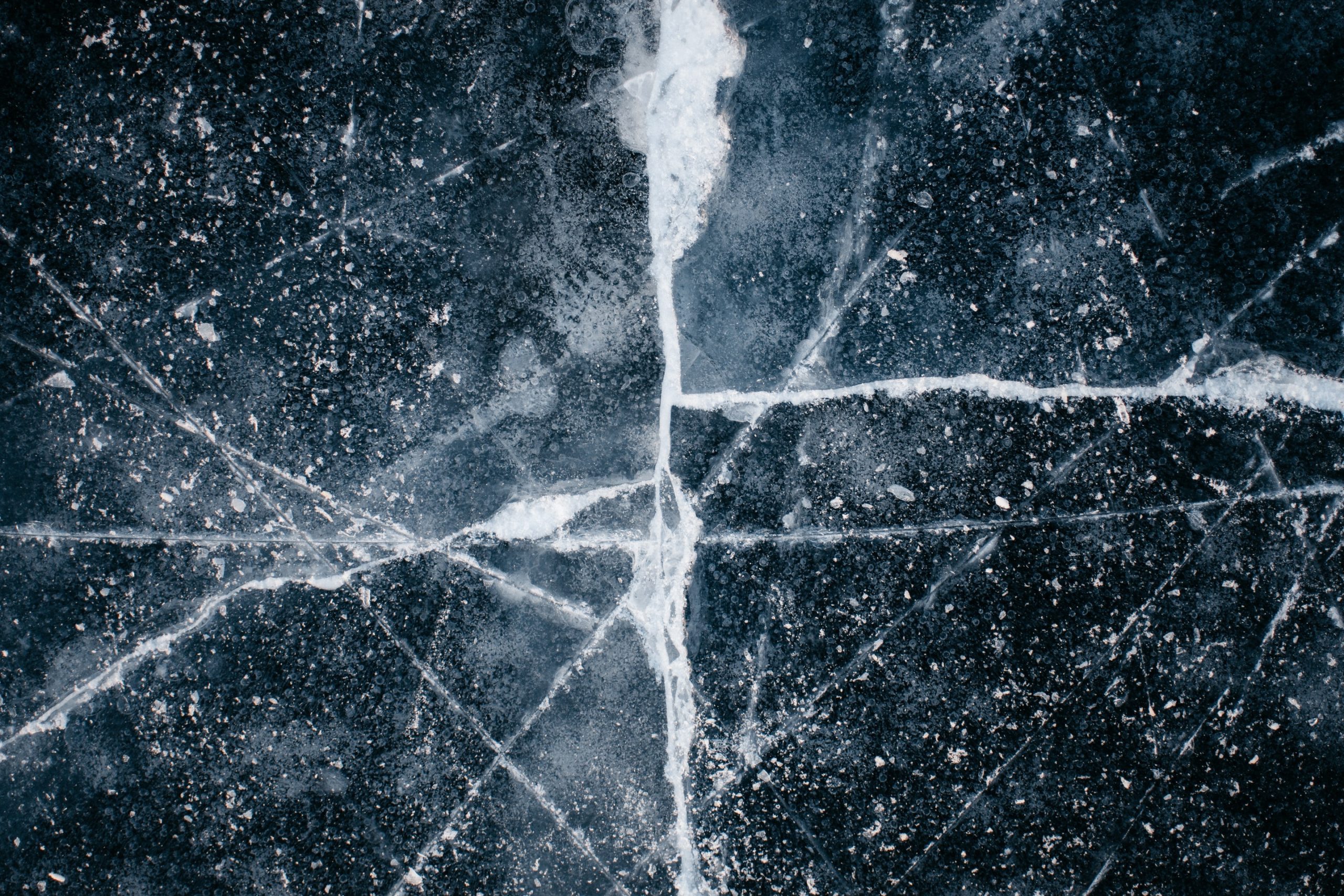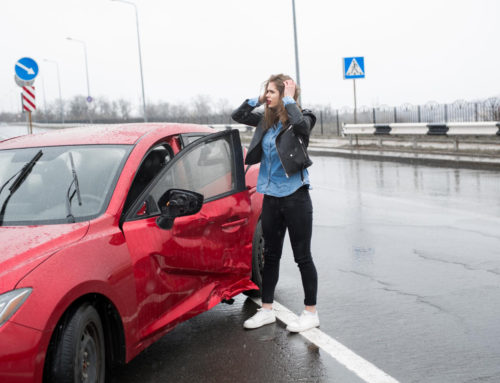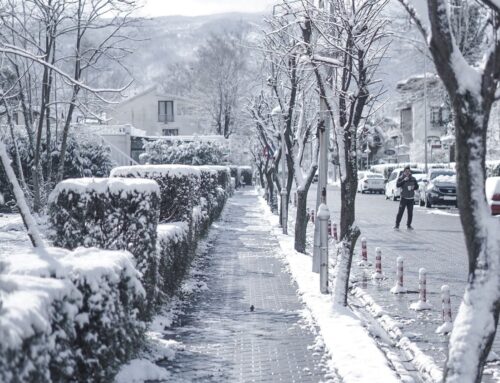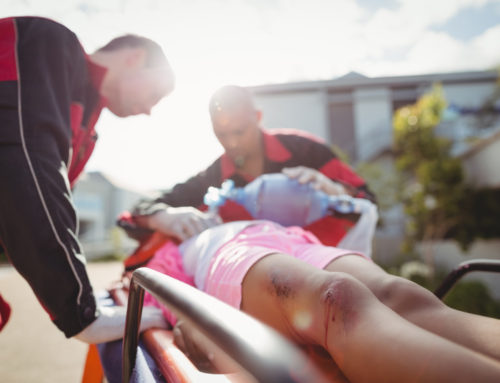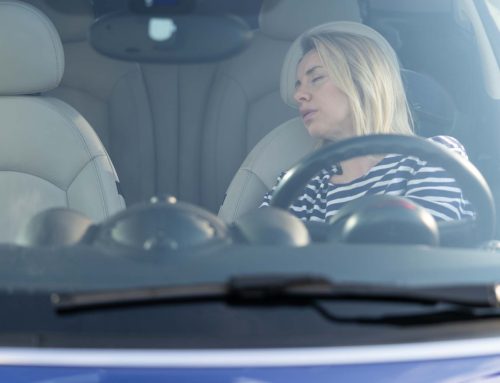It’s no secret that road conditions aren’t ideal in the winter. Ice and snow are the headache we see coming every year, which allows us to prepare and drive safely. Annually, about 1,836 deaths and 136,309 personal injuries are caused by winter road conditions. Unfortunately, not all driving hazards are visible at a glance.
Black ice is a layer of ice on the road that is so thin, you can barely see it. It doesn’t even have any air bubbles to indicate its presence. How do you avoid something if you can’t tell that it’s even there?
Let’s talk it through.
What’s the Big Deal?
Black ice is even more dangerous than regular ice because of its nearly complete transparency, and regular ice is lethal enough as it is.
- According to Axel Wise, icy road conditions cause about 1,836 fatalities and 136,306 injuries every year.
- There are weather sensors in Kansas City because of the black ice in multiple problem areas.
- Because of the gravity of this roadway safety hazard, 20% of the Department of Transportation’s budget is spent on snow and ice removal. That’s about 2.3 billion
- 8% of respondents in a survey have encountered black ice on the road.
Where Does It Come From?
Knowing when and where black ice is most likely to form on the road helps drivers understand when it’s important to exercise extra caution and avoid a car accident. Black ice is caused by certain conditions such as the following.
- Light, freezing rain.
- Melting and then refreezing of snow and ice.
- According to studies conducted by the NHTSA, the most dangerous time of day for drivers in the winter is between 9am and 2pm.
- Fog before the temperature drops.
- Dew forming before the temperature drops.
- Temperatures below 32 degrees Fahrenheit.
Since specific conditions cause black ice, it only makes sense that some locations are more likely to have black ice patches on them than others. These locations are as follows.
- Bridges.
- Overpasses.
- Sections of the street in the shadow of trees or buildings.
- Back roads.
- Tunnels.
- Overpasses.
These places are more likely to have black ice than others because of high elevation, low temperatures, moisture, or lack of sunlight. However, that does not mean that these are the only places where you can find this driving hazard; it simply means it’s much more probable.
Black Ice? Where?
Now that you know where you can expect black ice, it’s time to learn how to recognize it while driving and how to adjust.
- The pavement looks darker in some spots than others.
- If the road looks wet, it’s either black ice, or it’s actually just wet. As the saying goes, it’s better to be safe than sorry, so drive accordingly.
- Icy conditions are another indicator that black ice is likely present.
- Foggy weather can indicate black ice or fog ice which is similar to regular ice but even colder.
If you suspect black ice is afoot, it’s important to tread lightly. Here’s what you need to know.
- Go slow! Black ice makes it hard to stop, and braking in these situations is unsafe. It can cause a spin out.
- Black ice provides no traction, so if you find yourself driving over it, take your foot off of the accelerator right away.
- Keep the steering wheel straight allowing you to slowly coast over the ice.
- If you have to brake, do so very lightly and gently.
- Follow traffic laws. This is important to do all the time, and winter weather is especially not the season to be reckless.
- In the event that your car starts to skid, pump the brakes lightly and turn into the skid. This allows your tires to find traction again.
- Invest in snow tires, and keep a roadside emergency kit in your vehicle in case of a car accident. It takes about 35% less time to come to a complete stop in icy conditions with snow tires. Remember – aggressive tire treads aren’t always effective unless they have the 3PMSF symbol!
- Avoid driving at night or any other times when visibility is low.
If you do get into an accident, it’s important to hire an attorney to help you through the process. Representing yourself is not only a mistake, but an unnecessary and expensive hassle. Your car accident lawyer will:
- Go over your claim with you to prevent any unintentional self-sabotage.
- Handle communications with the insurance company.
- Make sure that legal paperwork is completed correctly and on time.
- Fight for the settlement you deserve.
- File a lawsuit if the party at fault is uncooperative in negotiations.
- Help you gather the evidence you need to prove your case.
Plus, you won’t be charged a dime until after you’ve won the settlement you need to cover all of your case related expenses.
Car accidents are no picnic, so follow our safety tips above and on our website to avoid them when you can. If you or a loved one have been injured in a car accident caused by a negligent driver, contact us as soon as possible for free legal advice when you schedule a consultation with one of our personal injury lawyers. You deserve to be compensated, and we’re the law firm to get you there.


